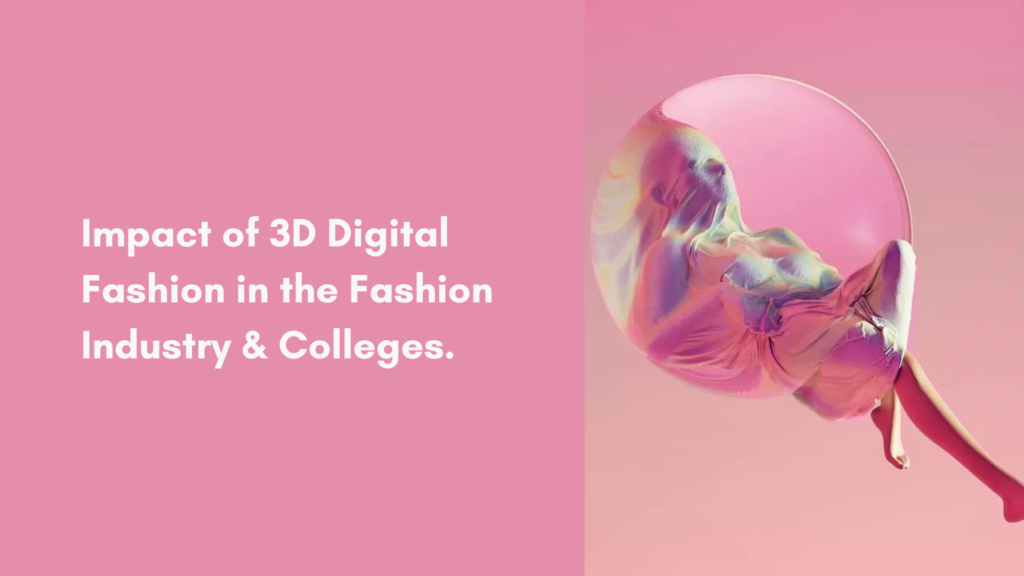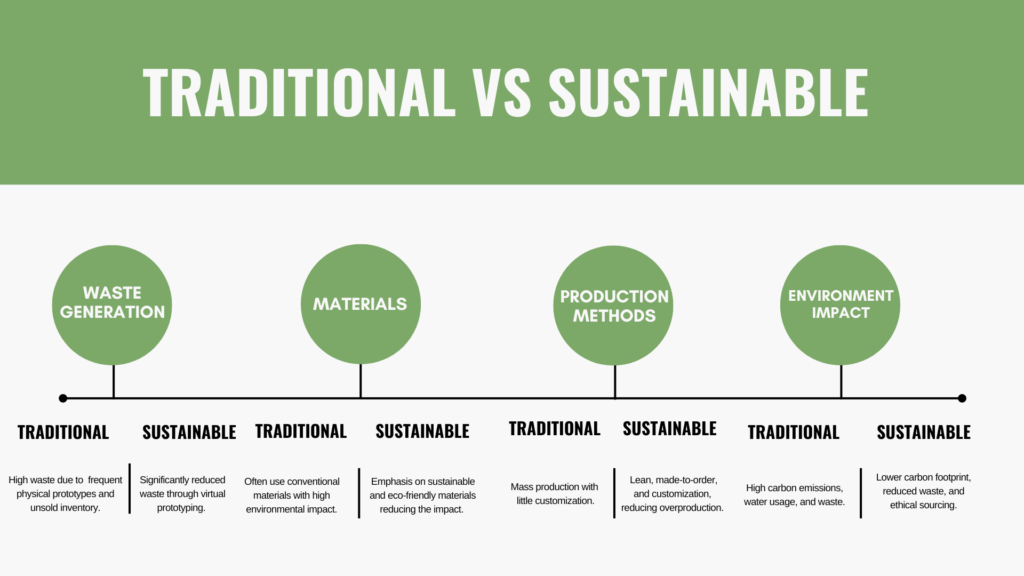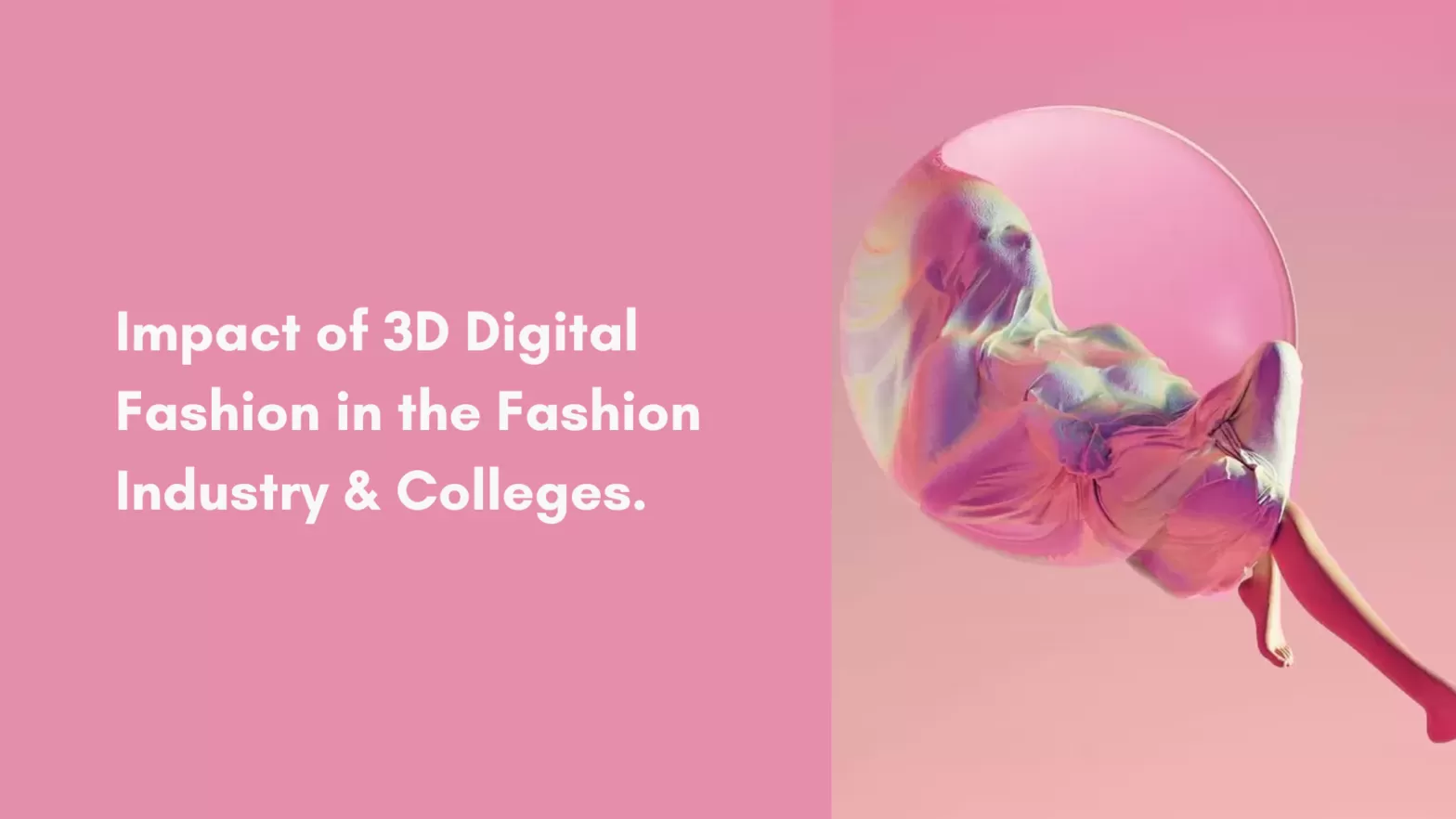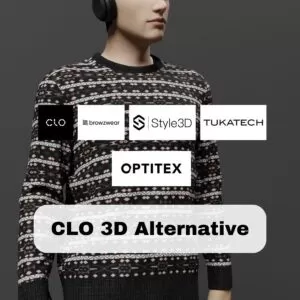
Impact of 3D Digital Fashion in the Fashion Industry & Colleges?
“Revolutionizing Style: The Transformative Influence of 3D Digital Fashion on Industry and Education”
_____________
Introduction to 3D Digital Fashion
In the ever-evolving world of fashion, the collaboration of technology and style has birthed a revolutionary trend: 3D digital fashion. This cutting-edge phenomenon has begun to reshape not only the way we create and consume fashion. But also how it is taught and cultivated in colleges and universities around the globe. In this article, we delve into the profound impact of 3D digital fashion on both the industry and educational institutions. Exploring remarkable changes it has brought to design, production, sustainability, and what it means to be fashionable in the 21st century.
What is 3D digital fashion, and how does it differ from traditional fashion design?
3D digital fashion is a modern approach to fashion design that utilizes computer-generated 3D models and simulations to create and visualize clothing. It differs from traditional fashion design by reducing the need for physical prototypes and enabling designers to work in a virtual environment.
Transforming Fashion Production
One of the most significant impacts of 3D digital fashion is its ability to transform the production process. Traditional fashion design involved numerous iterations and physical prototypes, leading to substantial material waste. Designers can create and visualize garments in a virtual space, reducing the need for physical samples. This not only speeds up the design process but also reduces environmental impact.
How the fashion industry is adopting 3D digital fashion for more sustainability and efficiency.
Below are some of the ways in which 3D digital fashion is helping the fashion industry.
| Reduced Material Waste 📦 | Virtual Prototyping: allows designers to create and test garments in a virtual environment, reducing the need for physical prototypes. This significantly cuts down on material waste associated with multiple iterations of physical samples By adopting virtual prototyping, the fashion industry takes a significant step toward reducing its ecological footprint and embracing more sustainable practices. It empowers designers to create environmentally responsible fashion collections while also benefiting from cost efficiency and faster time-to-market advantages. |
| Sustainable Material Exploration🍃 | Experimentation: Designers can use 3D software to experiment with sustainable materials and production methods without the need for physical resources. This encourages the use of eco-friendly fabrics and techniques. By leveraging 3D software for experimentation, fashion designers can play a pivotal role in promoting the adoption of sustainable materials and production methods within the industry. This approach encourages creativity, resource conservation, and environmentally responsible design practices, ultimately contributing to a more sustainable and eco-friendly fashion landscape. |
| Made-to-Order Production✅ | Customization: enables made-to-order production, where garments are produced only when an order is placed. This minimizes overproduction and reduces excess inventory, a major source of waste in traditional fashion. By embracing customization and made-to-order production, fashion brands can contribute to a more sustainable and environmentally responsible industry. This approach not only reduces waste and conserves resources but also empowers consumers to make eco-conscious choices in their clothing purchases. |
| Streamlined Design Processes📊 | Efficiency: The digital design process is more efficient, allowing designers to work on multiple iterations simultaneously and make quick adjustments. This reduces the time required to bring a design from concept to market. Digital design is a cornerstone of efficiency and innovation in the fashion industry. It empowers designers to iterate, adjust, and collaborate seamlessly, resulting in faster product development cycles, reduced waste, and a more agile response to consumer demands—all while supporting sustainable and eco-conscious fashion practices. |
| Sustainable Supply Chain🏭 | Traceability: This fashion technology can integrate with supply chain management systems, offering better traceability of materials and products. This transparency aids in sustainability efforts by ensuring ethical sourcing and responsible production. Traceability is a powerful tool for fashion brands committed to sustainability. It ensures that materials and products are sourced and produced responsibly, allowing brands to align with eco-conscious consumers’ values and contribute to a more ethical and environmentally friendly fashion industry. |
| Virtual Fashion Showrooms🕹 | Reduced Travel: Brands can showcase their collections in 3D virtual showrooms, reducing the need for physical fashion shows and the associated carbon footprint from travel and event logistics. the transition to 3D virtual showrooms in the fashion industry has far-reaching sustainability benefits. It curtails travel-related carbon emissions, minimizes resource-intensive event logistics, reduces fashion waste, promotes inclusivity, enhances collaboration, and embraces eco-friendly technologies. By embracing virtual showcases, the fashion industry can significantly reduce its environmental impact and contribute to a more sustainable and accessible future for fashion. |
| Digital Fit and Sizing👚 | Accurate Sizing: allows for precise sizing and fit adjustments, reducing the need for returns due to sizing issues. This minimizes the environmental impact associated with return shipping and disposal of returned items. By investing in accurate sizing technology, fashion brands not only enhance the customer experience but also play a role in reducing the environmental impact of the industry. It aligns with the principles of sustainability by reducing waste, conserving resources, and promoting responsible consumption. |
| Sustainability Reporting📄 | Data Analytics: systems can generate data on material usage and production processes, facilitating sustainability reporting and helping brands make informed decisions to reduce their environmental impact. data analytics systems are invaluable tools for fashion brands committed to sustainability. They provide the insights needed to optimize material usage, reduce waste, lower carbon emissions, and make informed decisions that contribute to a more eco-friendly and sustainable fashion industry. |
| Collaborations and Innovation🤝 | Cross-Sector Collaboration: The fashion industry is collaborating with technology companies and educational institutions to innovate further. These collaborations lead to the development of sustainable solutions and foster creativity. cross-sector collaboration is a catalyst for sustainability and innovation in the fashion industry. By working together with technology companies and educational institutions, fashion brands can develop sustainable solutions, promote responsible consumption, and address the challenges of environmental and social sustainability in a more holistic and effective manner. |
| Reduced Carbon Footprint 🍀 | Fewer Physical Resources: By reducing the reliance on physical samples, the fashion industry can cut down on the carbon emissions associated with production, transportation, and waste disposal. the fashion industry’s move away from physical samples represents a significant step toward environmental sustainability. It conserves resources, lowers energy consumption, reduces transportation emissions, minimizes waste, and ultimately contributes to the industry’s efforts to address climate change and reduce its ecological footprint. |
Want to learn and master 3D Digital Fashion?
The best platform is Learn 3D Fashion , Here’s what you need🤫
Learn 3D-Fashion Platform is the #1 platform for learning 3D Digital fashion. With a remarkable student base exceeding 2800+ individuals from over 10+ countries, our platform has attracted esteemed brands and institutions including NIKE, Harvard, FIT, and UAL.
Traditional Vs Sustainable

How is 3D Digital Fashion helping fashion design students in colleges?
3D digital fashion is empowering college students in the field of fashion by revolutionizing their learning experience. Through this technology, students can foster creativity without the constraints of physical prototypes. Streamline design processes, explore sustainable practices, master essential digital tools, and engage in collaborative, innovative projects. By seamlessly integrating this skill into their education, students can enhance their design skills. This will be preparing them for a technology-driven, sustainable, and innovative future in the fashion industry.
There are many articles explaining how the 3D dynamic fashion design industry has brought a change in the online platform development using digital technology and its potential in online platforms, a few articles and research papers are also published on the same:
– 3D dynamic fashion design development using digital technology and its potential in online platforms
(1https://fashionandtextiles.springeropen.com/articles/10.1186/s40691-021-00286-1)
-A Collaborative Study on 3D Dynamic Fashion Design Development, Using Digital Technology
Conclusion
In conclusion, 3D digital fashion is reshaping the very fabric of the fashion industry and fashion education. As we’ve explored throughout this article, its profound impact is evident in the strides made toward sustainability, efficiency, and innovation. Fashion students, armed with 3D technology, are not merely learners; they are pioneers driving positive change. They are reducing waste, championing sustainable practices, and mastering the digital tools that will define the future of fashion. This transformative journey is a testament to the power of technology and education. It fosters a fashion industry that is stylish, responsible and ready to meet the challenges of tomorrow. As this skill continues to evolve. it will undoubtedly be at the forefront of a new era in fashion. One where creativity knows no bounds, waste is minimized, & the runway of sustainability meets the cutting edge of design.
Hey there! 👋 Thanks for reading. Join our newsletter to be the first one to get updates and more and also check out our other topics that can interest you!
**Check your Promotion Tab
- 5 Best CLO 3D AlternativesTop 5 CLO3D Alternatives in 2024 In this article we will be introducing you to the top 5 CLO3D alternatives… Continue reading 5 Best CLO 3D Alternatives
- CLO3D and Blender Course Guide | Learn 3D FashionDive into the world of 3D design with our essential guide to CLO 3D and Blender courses. Perfect for artists and designers at any level, this guide covers everything you need to know to start creating stunning 3D models and animations.
- CLO 3D for Beginners course guideGet started with the Free clo3d beginners course guide. Understand how 3D Fashion is shaping the future of fashion and start learning clo3d.
- Pattern Making with CLO 3D | A Beginners GuidePattern Making with CLO 3D | A Beginners Guide Introduction Welcome to the fascinating world of digital fashion design, where… Continue reading Pattern Making with CLO 3D | A Beginners Guide
- CLO vs. Browzwear (and the Rest!) – What is best for beginners?Fashion Tech Showdown: CLO vs. Browzwear (and the Rest!) – Who is best for beginners? Tired of flat sketches and… Continue reading CLO vs. Browzwear (and the Rest!) – What is best for beginners?
- Master CLO 3D Fashion Design: Enroll in Our Live Classes Today!Master CLO 3D Fashion Design: Enroll in Our Live Classes Today!






